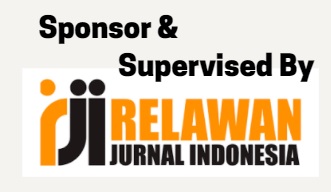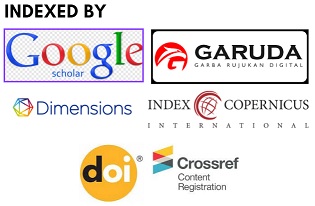Hubungan Antara Waktu Kerja dan Beban Kerja Fisik dengan Perasaan Kelelahan Pada Pekerja di Home Industry Tahu di Dukuh Janten
DOI:
https://doi.org/10.55340/kjkm.v2i1.139Keywords:
Working Time, Physical Workload, Feelings of Fatigue.Abstract
Background: Fatigue is a safety hazard in the workplace and can reduce work productivity. Fatigue that occurs continuously will become chronic fatigue. The feeling of fatigue experienced by sufferers can occur before doing work, during work and can occur after doing work in the afternoon. Fatigue occurs when the workload is 30-40% of work capacity and static work is carried out for a long time. Extending work time more than the ability to work long will be a tendency for fatigue. Any kind of work will be a burden for those who do it, whether it is a physical or mental workload.
Method: This type of quantitative research using observational analytic method with cross sectional approach. The sampling technique using purposive sampling with a population of 114 workers and a sample of 60 workers. The instrument used is a questionnaire and pulse measurement using a stopwatch. Data analysis used univariate analysis and bivariate analysis using the chi-square test.
Results: Research shows that the relationship between work time and feeling of fatigue is obtained p-value 0.040 (p <0.05), which means that there is a relationship between workforce and feeling tired. While the physical workload with feelings of fatigue obtained a p-value of 0.012 (p <0.05) which means that there is a relationship between physical workload and feeling tired.
Conclusion: There is a relationship between work time and feeling tired, there is a relationship between physical workload and feeling tired.
Downloads
References
2. Fandhitya, S.A. 2013. Tenaga Kerja: Perspektif Hukum, Ekonomi, dan Sosial. Yogyakarta: Azza Grafika. Hal. 37, 43.
3. Suma’mur P.K. 2014. Higiene Perusahaan dan Kesehatan Kerja (HIPERKES). Jakarta: Sagung Seto. Hal. 407, 410-411.
4. Iridiastadi, H. dan Yassierli. 2014. Ergonomi Suatu Pengantar. Bandung: PT. Remaja Rosdakarya. Hal. 100, 118, 114.
5. Triwibowo, C. dan Mitha, E.P. 2013. Kesehatan Lingkungan dan K3. Yogyakarta: Medical Book. Hal. 101.
6. Notoatmodjo, S. 2014. Kesehatan Masyarakat Ilmu dan Seni. Edisi Revisi. Jakarta: PT. Rineka Cipta. Hal. 203-204.
7. Narpati, J.R., Ekawati dan Ida W. 2019. Hubungan Beban Kerja Fisik, Frekuensi Olahraga, Lama Tidur, Waktu Istirahat dan Waktu Kerja dengan Kelelahan Kerja (Studi Kasus pada Pekerja Laundry Bagian Produksi di CV. X Tembalang, Semarang). Jurnal Kesehatan Masyarakat. Vol. 7, No. 1, Hal. 337-344.
8. Saputra, J. 2017. Hubungan Lama Kerja dengan Kelelahan Kerja pada Pengendara Go-jek Community Medan Tahun 2017. Skripsi, Universitas Sumatera Utara, Medan. Diterbitkan.
9. Dewi, P.A., Daru L. dan Baju W. 2019. Faktor-Faktor yang Berhubungan dengan Kelelahan pada Pekerja Buruh Angkut di Pasar Balai Tangah Kecamatan Lintau Buo Utara, Sumatera Barat. Jurnal Kesehatan Masyarakat. Vol. 7, No. 1, Hal. 358-364.
10. Setyawati, L. 2010. Selintas Tentang Kelelahan Kerja. Yogyakarta: Amara Books. Hal. 6, 26, 29-31, 38, 45, 60.
11. Alamsyah, D. dan Ratna M. 2018. Pilar Dasar Ilmu Kesehatan Masyarakat. Yogyakarta: Nuha Medika. Hal.190.
12. Tarwaka. 2015. Ergonomi Industri. Revisi Edisi 2. Surakarta: Harapan Press. Hal. 104, 109,118
13. Permatasari, A., Farit R. dan Sabril M. 2017. Faktor yang Berhubungan dengan Kelelahan Kerja pada Karyawan di Matahari Department Store Cabang Lippo Plaza Kendari Tahun 2016. Jurnal Ilmiah Mahasiswa Kesehatan Masyarakat. Vol. 2, No.5.
14. Safitri, M. 2017. Hubungan Beban Kerja dengan Kelelahan Kerja pada Pekerja Industri Rumah Tangga Rambak Kering Desa Doplang Kecamatan Teras Boyolali. Skripsi, Universitas Muhammadiyah Surakarta, Surakarta. Diterbitkan.
15. Kusgiyanto, W., Suroto dan Ekawari. 2017. Analisis Hubungan Beban Kerja Fisik, Masa Kerja, Usia, dan Jenis Kelamin terhadap Tingkat Kelelahan Kerja pada Pekerja Bagian Pembuatan Kulit Lumpia di Kelurahan Kranggan Kecamatan Semarang Tengah. Jurnal Kesehatan Masyarakat. Vol. 5, No. 5. Hal. 413-423.














